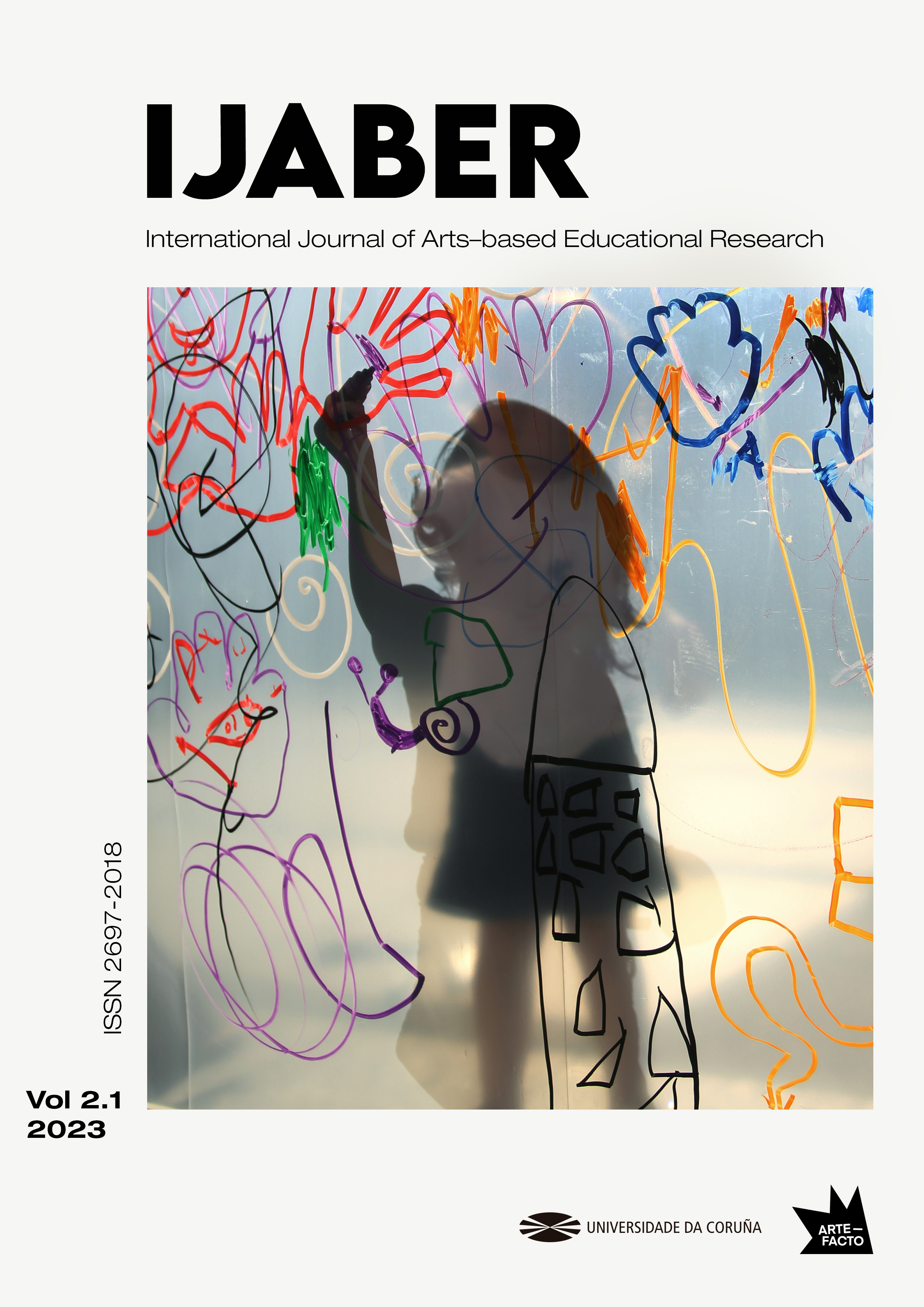The urban space as an open museum. Artistic processes outdoors
Main Article Content
Abstract
This proposal introduces the everyday environment as a space for social and cultural intervention, presenting it as an artistic proposal and outdoor experience that brings the viewer closer to contemporary art. It begins by breaking down institutional barriers through mobile mini-schools, following the model of Goodman’s pedagogy and seeking intersections with the cultural and traditional project led by Eileen Adams (The Campaign of Drawing). Through educational and artistic processes, we pursue identify points of convergence, open the classroom to the outside, and design transformative experiences that connect Art-Life and highlight the role of the artist as an educator. To achieve this, public spaces where the community gathers, engages in conversation, and spends time are selected. These spaces are then transformed through artistic actions that invite the public to participate in the creation of the artwork.
Keywords:
Downloads
Article Details
References
Agra, M.J (1999). Orientaciones interdisciplinares en Educación Artística. ADAXE.
Revista de Estudos e Experiencias Educativas, 14-15, 167-184).
Agra, M.J., y Mesías J.M. (2007). Espacio Educativo /Espacio Estimulante? CGAC
Centro Galego de Arte Contemporánea.
Alonso Hinojal, I. (1980). Berstein en la encrucijada de la sociología de la educación.
Revista española de investigaciones sociológicas, 11, 55-74.
Blanco Mosquera, V., y Cidrás, S. (2016). Educar a través da arte: cara a una escola
imaxinada. Kalandraka.
Boulton, A., Grauer, K., y Irwin, R.L. (2017), Becoming Teacher: A/r/tographical Inquiry
and Visualising Metaphor. Int J Art Des Educ, 36, 200-214. https://onlinelibrary.wiley.
com/doi/epdf/10.1111/jade.12080
Careri, F. (2007). Walkscapes. El andar como práctica estética. Editorial Gustavo Gili
Eisner, E.W. (1998). El ojo ilustrado. Indagación cualitativa y mejora de la práctica
educativa. Ediciones Paidós Ibérica.
Goodman, N. (1995). De la mente y otras materias. Visor.
Hoyuelos, A. (2008). Los tiempos de la infancia. https://studylib.es/doc/2207132/
hoyuelos_tiempos_de_la_infancia-1-.pdf
Jullien, F. (2017). La identidad cultural no existe. Taurus
Martín-Baró, I. (2006). Hacia una psicología de la liberación. Revista Electrónica de
Intervención Psicosocial y Psicología Comunitaria, 1(2), 7-14. https://dialnet.unirioja.
es/descarga/articulo/2652421.pdf
Ostower, G. (1977). The League of Nations. Garden City Park. Avering Publishing.
Palacios, A. (2010). Educación Artística Comunitaria en Finlandia: entrevista a Timo
Jokela. Pulso, 33, 109-127.
Rifkin, J. (2001). La era del acceso. Paidós.
Robinson, K., y Aronica L. (2009). El Elemento. Descubrir tu pasión lo cambia todo.
Grijaldo.
Ruiz de Velasco, A., y Abad, J. (2011). El juego simbólico. GRAÓ.
Russo-Netzer, P. (2023). Building Bridges, Forging New Frontiers: Meaning-Making in
Action. Social Sciences, 12(10), 574. https://doi.org/10.3390/socsci12100574
Wallas, G. (1920). Human nature in politics. FQ Books.







